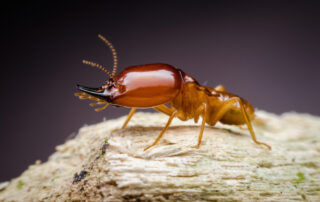The Importance of Escrow Termite Inspections: Protecting Your Investment
When buying or selling a home, one of the most critical yet often overlooked steps is the escrow termite inspection. Termites are silent destroyers that can cause extensive damage to a property, sometimes without any visible signs. This makes it crucial to assess a home's structural integrity before finalizing a transaction. Whether you are a buyer looking to make a sound investment or a seller wanting to close without complications, an escrow termite inspection ensures that both parties are fully informed about any potential termite activity. What Is an Escrow Termite Inspection? An
Types of Wood Termites Eat
Even though termites are small insects, they can cause considerable damage to your house over time. It is therefore crucial to be conversant with the different types of wood that termites feed on to prevent any possible loss. Termites are silent destroyers. They methodically attack your attic, basement, and other parts of your house that are built with wood. While their effect may not show up immediately, their tenacity enables them to cause serious damages to your house in the long run. This is because wooded environs not only provide them with food
The Truth About Ultrasonic Pest Repellers: Do They Really Work?
When it comes to keeping pests out of your home, ultrasonic pest repellers often seem like a convenient and high-tech solution. These devices have gained significant attention, promising to repel rodents, insects, and other unwanted guests with high-frequency sound waves. But are they as effective as they claim to be? Let’s dive into how ultrasonic pest repellers work, their effectiveness, and whether they’re worth incorporating into your pest control strategy. How Ultrasonic Pest Repellers Are Supposed to Work Ultrasonic pest repellers emit high-frequency sound waves that are typically inaudible to humans and pets
Crane Flies vs. Mosquitoes: How to Tell the Difference and Why It Matters
Flying insects like crane flies and mosquitoes are a common sight around homes, especially during warmer months. Although they might appear similar at first glance, their behaviors, risks, and impacts on the environment couldn’t be more different. Understanding these differences is key to knowing how to manage their presence effectively and protect your home and health. What Is a Crane Fly? Crane flies, often nicknamed “mosquito eaters,” belong to the family Tipulidae and are closely related to other true flies. These insects are easily recognized by their long legs and delicate, slender bodies.
Tips for Treating Insect Stings: How to Handle Summer’s Unwanted Guests
Summer is the perfect time to enjoy outdoor activities, but stinging insects like bees, wasps, hornets, and yellowjackets can quickly turn a fun day into a painful experience. Knowing how to manage insect stings is crucial for staying safe and comfortable during these months. Identifying Common Stinging Insects Insects like bees, wasps, hornets, and yellowjackets are prevalent in the summer, and their stings can range from minor irritations to serious allergic reactions. Understanding the differences between these stinging insects is the first step to managing their stings effectively. Bees: Typically sting when provoked
Winter Pest Prevention: How to Keep Your Home Safe from Rodents and Insects
Winter brings with it a variety of picturesque moments, but it also creates an open invitation for pests seeking warmth. As homeowners, it’s crucial to recognize that colder weather can increase the likelihood of infestations from rodents, insects, and other pests. Protecting your home from these unwanted visitors is essential to both preserving its structural integrity and reducing pest-related health risks. Why Winter Attracts Pests When temperatures drop, pests like rodents, spiders, and cockroaches seek out warm spaces for shelter. Your home, with its heat and food sources, becomes a perfect refuge.






